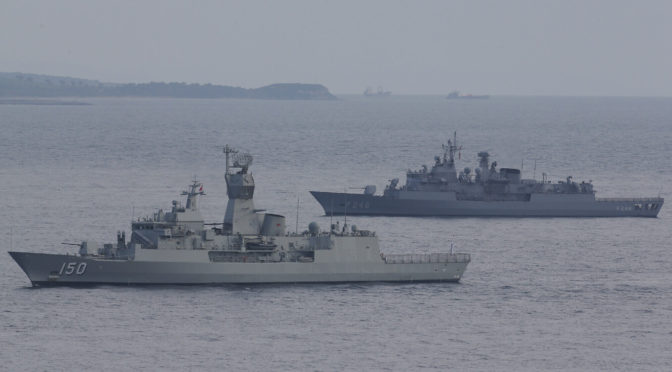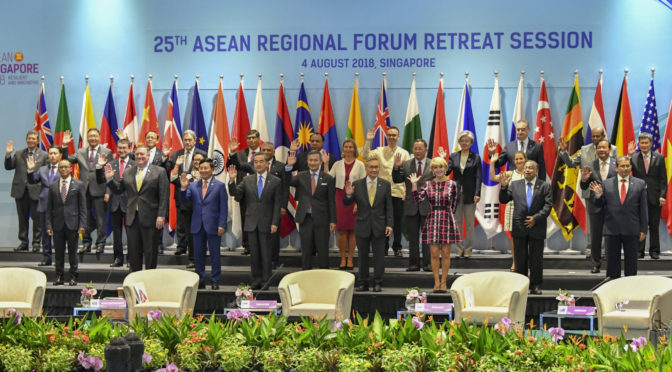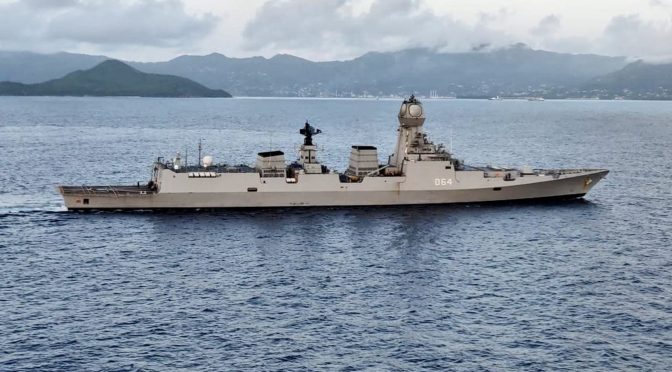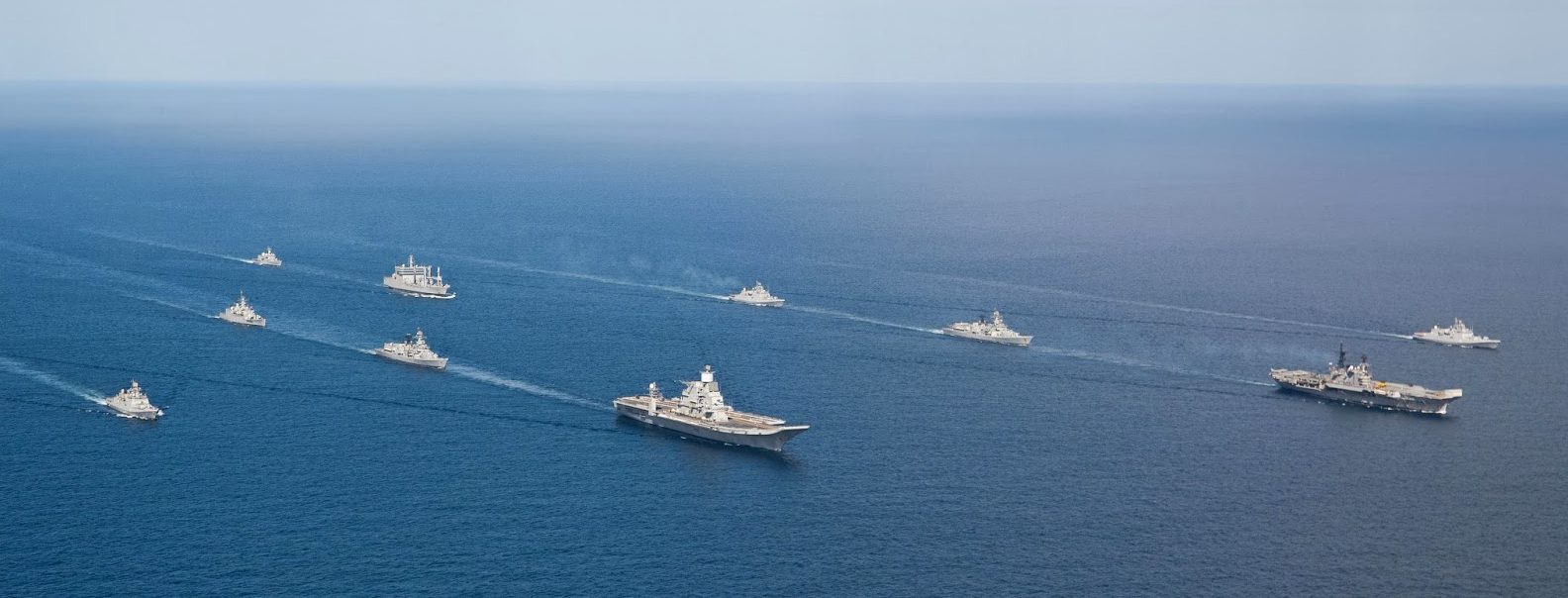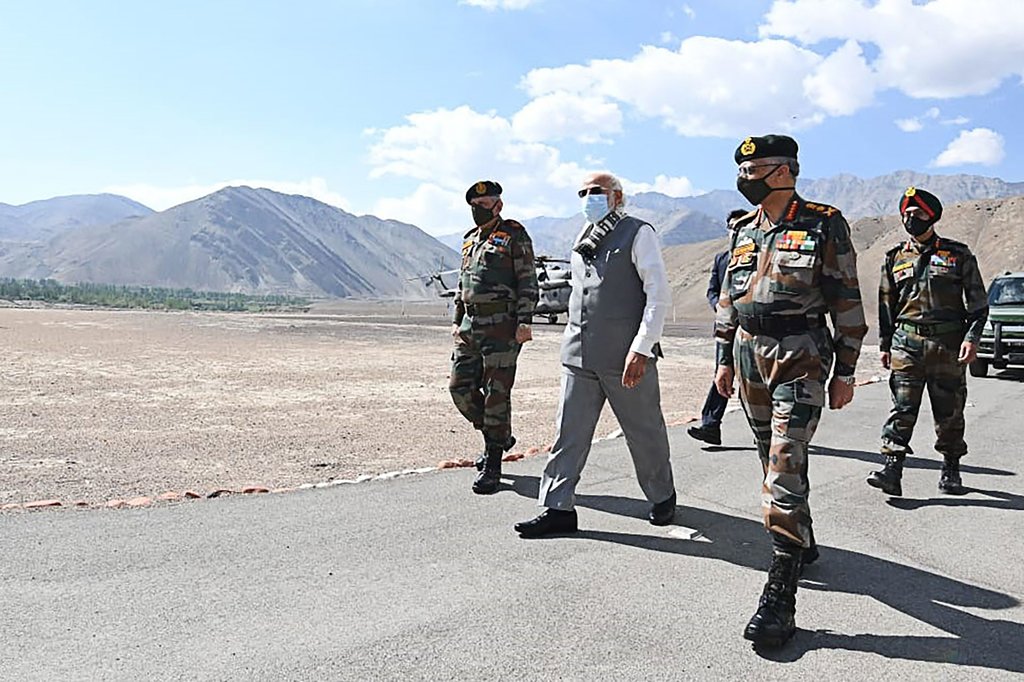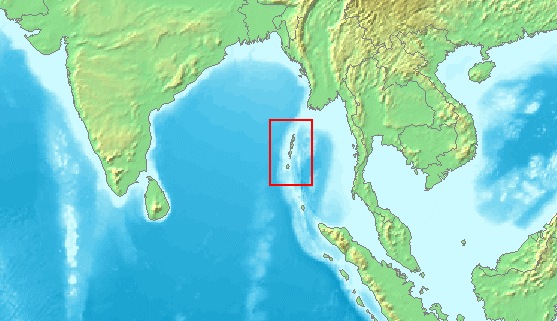By Dmitry Filipoff
CIMSEC received a tremendous response to our Project Trident’s call for articles on regional maritime powers and strategies, launched in partnership with the Yokosuka Council on Asia Pacific Studies, the Institute for Security Policy at Kiel University, and the Dominican Command and Naval Staff School. Authors from many regions of the world responded with analysis and insight on regional powers and their maritime security challenges. Among their many takeaways, several themes emerged from their contributions.
Some smaller and medium-sized nations are looking to expand their standing and roles, including going beyond being a provider of their own security to providers of regional security. Others are looking to take their own experience in dealing with local threats and export their know-how via cooperative exercises and exchanges. Some nations and navies are feeling compelled to take on a larger role in regional affairs, or are taking uncharacteristically assertive actions that are making waves, such as Turkey’s insistence on its own version of maritime rights in the Eastern Mediterranean.
The actions and ambitions of great powers are reverberating across the strategies of smaller and medium-sized nations. As great powers grow in military might and decisively alter the traditional military balance within a region, smaller powers feel compelled to adapt both militarily and diplomatically to bolster deterrence. Smaller and medium-sized nations, especially in Asia, have equipped their navies with lethal and advanced modern weaponry. They are increasingly exercising with one another and establishing deeper ties with respect to military cooperation. Great powers should take note, since as they disrupt the usual military calculations of a region they can precipitate determined countermeasures from smaller nations.
What is clear is that smaller and medium-sized navies can have major influence. Whether it be through preeminence within a nearby body of water or proximity to a heavily-trafficked chokepoint that would be highly contested in a major conflict, the roles and capabilities of regional powers should not be underestimated. Regional navies are on the frontlines of managing traditional and non-traditional threats, and are constantly mindful of the ever-evolving maritime security environment within their locales.
Below are the articles that featured during the extended topic week, with excerpts. We thank these authors for their excellent contributions.
“China’s Aircraft Carriers and Southeast Asia: Testing Coercive Naval Diplomacy?” by Shang-su Wu
“Since the People’s Liberation Army Navy (PLAN) commissioned its second aircraft carrier, the possibility of utilizing these capital ships for coercive diplomacy is becoming more real. In China’s surrounding areas, Southeast Asia would be most suitable for “carrier diplomacy” regarding the proximity, the relatively weak defenses of the regional countries, and the major territorial disputes in the South China Sea. However, Southeast Asian countries, with their military modernizations and geopolitical circumstances, would not be merely hopeless either.”
“Illegal Fishing in the South Pacific: What Can the Chilean Navy Do?” by Francisco Martinez
“The Chilean Navy is more than just a national warfighting force aimed at conventional deterrence. Earthquakes, volcanic eruptions, fires, and tsunamis are all examples of natural disasters that Chile faces in which the Navy is one of the first to provide support. Along with disaster relief and safeguarding life at sea, countering Illegal, Unreported, and Unregulated (IUU) fishing is one of the most economically important duties of the Chilean Navy.”
“Boats, Budget, and Boots: The Colombian Navy’s Challenges in International Cooperation” by Rafael Uribe Neira
“In recent years the Colombian Navy has undergone a well-planned but less-than-well executed modernization to exert sea control and counter regional threats in both the Caribbean Sea and the Pacific Ocean. After significant changes in doctrine and procurement, the institution still struggles to contribute to regional security despite being a key U.S. partner in the region.”
“The Sino-Japanese Maritime Disputes in the East China Sea” by Yoichiro Sato
“While much focus is paid to the Chinese claim of sovereignty over the Senkakus (China calls them Diaoyu), the dispute over the islands is partially nested within a larger dispute over the broader Exclusive Economic Zone(EEZ)/Continental Shelf boundary dispute between the two countries. As such, the implications of the islands’ sovereignty over the broader maritime boundary dispute and the respective strategies of China and Japan warrant closer examination.”
“The Israeli Navy in a Changing Security Environment” by Ehud (Udi) Eiran
“Looking forward, the Israeli Navy is facing a number of challenges. First, if the tensions with Iran, which manifest themselves in occasional air strikes in Syria, will expand, the navy may be called to further develop capabilities to reach Iranian shores. Israel is 1,500 km away from Iran, and the sea is an attractive route to access the Islamic Republic. Israel’s recent normalization of its relationship with the UAE and Bahrain might also make future Israeli naval deployments in the Arabian Gulf easier. There is also talk of a possible Iranian naval station in Syria, which may bring the maritime conflict closer to home.”
“A South Pacific Island-Led Approach to Regional Maritime Security” by Michael van Ginkel
“Given the strong influence of the maritime space on the national economies and local communities within the South Pacific, the deleterious effects of non-traditional threats to human security in the maritime domain are of significant concern to the island nations. By further enhancing MDA, maritime law enforcement capacity, and security assistance capabilities, local South Pacific island governments and multilateral organizations can protect their maritime-based economies.”
“Sweden and the Blue Society: New Challenges for a Small Navy” by Lars Wedin
“A small navy like the Swedish Navy does not seek to be able to project power on a global scale – not even on a regional one. It cannot protect SLOCs in contested areas far away. But it can, and must, promote and defend its interests at sea in its own area of interest.”
“Turkey’s ‘Mavi Vatan’ Strategy and Rising Insecurity in the Eastern Mediterranean” by Capt. Andrew Norris, J.D., USCG (ret.) and Alexander Norris
“For the past several years, Turkey has leveraged its regional economic, political, and military superiority to aggressively assert a claim over contested, potentially oil-rich regions of the Eastern Mediterranean. This hegemonic strategy, domestically referred to as “Mavi Vatan,” or “blue homeland,” has most recently manifested itself in Turkey’s deployment of the seismic vessel Oruç Reis with a naval escort to disputed waters south and west of Cyprus. Despite widespread and growing international criticism of this doctrine and its associated activities, Turkey has so far remained steadfast in its resolve.”
“Between the Giants: The Future of the Taiwanese Navy in an Era of Great Power Competition” by Jonathan Selling
“In this new world of enhanced competition between the United States and China, no nation has more reason to be concerned than the island nation of Taiwan. Claimed by China, and largely protected by the United States, Taiwan cannot avoid being drawn into the competition. Because of its unsettled political status, Taiwan could easily become a flashpoint between the two powers.”
“Vietnam’s Struggles in the South China Sea: Challenges and Opportunities” by Viet Hung Nguyen Cao
“With only weak, symbolic reactions to China’s aggression, Vietnam is without a proactive or effective strategy to fight back. There are policies that Vietnam should adopt, but at the heart of these policies is the need for more international cooperation in resolving the issues linked to China’s strategy.”
“Southeast Asia: A New Strategic Nexus for Japan’s Maritime Strategy” by John Bradford
“With all branches of Japan state power now investing in Southeast Asian maritime security, this region is cementing as a new nexus in Japan’s maritime strategy. The scope, strategic intent, and likely future development of Japan’s maritime security activities in Southeast Asia merits closer examination.”
“Unraveling China with Soft Balancing: Malaysia, ASEAN, and the South China Sea” by Afdal Izal
“As dynamic as the international community and regional bloc is today, can ASEAN continue to make its relations work in spite of the great power rivalry near its shores? Will each member nation play by the ‘ASEAN way’ and with ‘ASEAN centrality’ when it comes to navigating the might of the U.S. and China? Malaysia offers an interesting case study, and especially in the context of ASEAN’s historical background and recent developments.”
“Italy Resurgent: Defending National Interests in the Mediterranean” by Capt. (N) Renato Scarfi (ret.)
“As much as Italy is concerned, the vital need of imports from the sea is evident, in particular because of the choice to base the national economy on strong industrialization. Although it is geographically defined as a peninsula, Italy can be likened to an island when it comes to its strong dependence on the availability of maritime lines of communication. The seas and the oceans therefore play a central role for the Italian economy because the scarcity of raw materials forces Italy to trade with foreign countries for supply.”
“The Pathway Toward Containment: Fleet Actions for the United States and ASEAN Plus 5” by Captain Gregory W. Snyder, USMC
“The ongoing territorial disputes playing out in the South and East China Seas offer useful case studies for determining what nations in the western Pacific can do differently to counter malign Chinese actions. Additionally, the United States has a variety of options to employ all of its sea services to help support its allies and partners in the region.”
“India’s Strategy for the Indian Ocean in Light of COVID-19 and Confrontation with China” by David Scott
“Paradoxically, though COVID-19 has weakened India’s economic ability to fund its naval infrastructure and assets program for the Indian Ocean, it has enabled India to strengthen its links with Indian Ocean micro-states through the humanitarian assistance delivered by the navy. Meanwhile, land confrontation with China at Galwan has encouraged India to deepen its military links with other maritime powers operating in the Indian Ocean. In an unstated but evident balancing fashion, this is enabling India to improve its maritime position in the Indian Ocean vis-à-vis China.”
“Between Scylla and Charybdis: ASEAN and the U.S.-China Contest for the South China Sea” by Mark Valencia
“ASEAN and its members are in an increasingly dangerous dilemma. They are under mounting pressure to choose between the U.S. and China in their competition for political and military preeminence in the region. In response, ASEAN member states are maneuvering to maintain their ‘neutrality’ and pursue ASEAN ‘centrality’ in international affairs affecting the region. Their perspectives and roles in this great power competition merit closer examination, as well as how they are adapting to it, and what—if anything—ASEAN can do.”
Dmitry Filipoff is CIMSEC’s Director of Online Content. Contact him at Content@cimsec.org.
Featured Image: Turkish Navy ships in 2015 (AP Photo/Lefteris Pitarakis)

